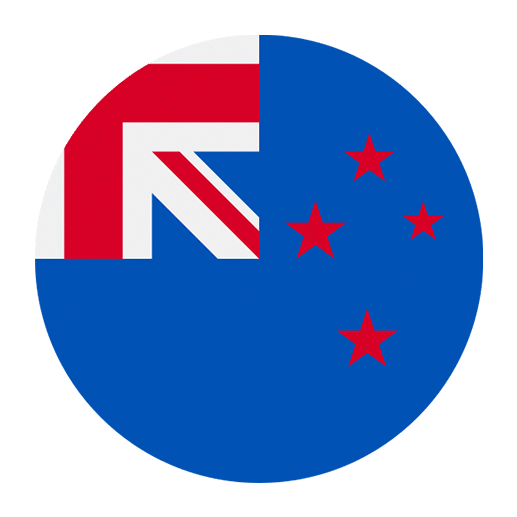The Māori language, or te reo Māori, is an integral part of the cultural fabric of New Zealand. The language is not merely a means of communication; it is a vessel carrying the history, traditions, and values of the Māori people. Understanding the relationship between the Māori language and customs, collectively referred to as Tikanga Māori, is essential for anyone interested in the rich heritage of New Zealand’s indigenous population. This article aims to explore the deep connections between te reo Māori and Tikanga Māori, elucidating how the language serves as a cornerstone for cultural practices and social norms.
The Foundation of Tikanga Māori
Tikanga Māori refers to the customs and traditions that shape the Māori way of life. These customs encompass a broad spectrum of activities, ranging from everyday interactions to significant life events such as birth, marriage, and death. Tikanga Māori is more than a set of rules; it embodies the collective wisdom and values passed down through generations.
Language plays a crucial role in preserving and transmitting these customs. Te reo Māori is the medium through which the principles of Tikanga are communicated, understood, and practiced. Without the language, many of the subtleties and nuances of Māori customs would be lost.
Historical Context
Before European colonization, te reo Māori was the predominant language in New Zealand. It was the language of governance, education, and daily life. The introduction of English during colonization led to a decline in the use of te reo Māori, threatening the survival of the language and, by extension, the customs and traditions it carried.
Efforts to revitalize te reo Māori began in the latter half of the 20th century, with initiatives such as kōhanga reo (Māori language preschools) and Māori language immersion schools playing a pivotal role. These efforts have not only helped to revive the language but have also strengthened the practice and understanding of Tikanga Māori.
Key Elements of Tikanga Māori
To fully appreciate the relationship between te reo Māori and Tikanga Māori, it is essential to understand some of the key elements that constitute these customs.
Whakapapa (Genealogy)
Whakapapa, or genealogy, is a fundamental aspect of Tikanga Māori. It refers to the lineage and ancestry that connect individuals to their whānau (family), hapū (sub-tribe), and iwi (tribe). Whakapapa is more than a family tree; it is a network of relationships that define one’s identity and place within the community.
Te reo Māori is rich in vocabulary and expressions related to whakapapa. The language allows for the precise articulation of familial connections and ancestral lineage. For example, terms like tūpuna (ancestors) and mokopuna (grandchildren) are integral to conversations about whakapapa. The language provides the framework for understanding and honoring one’s heritage, reinforcing the importance of kinship and community.
Marae (Meeting Grounds)
The marae is a sacred meeting place that serves as the heart of Māori social and cultural life. It is where important ceremonies, discussions, and gatherings take place. The protocols and rituals observed on the marae are deeply rooted in Tikanga Māori.
Te reo Māori is the primary language used on the marae. Ceremonial speeches (whaikōrero), songs (waiata), and greetings (mihi) are conducted in Māori, reflecting the cultural significance of the language. The use of te reo Māori in these contexts reinforces the sanctity of the marae and ensures that traditional practices are upheld.
Mana and Tapu (Spiritual Concepts)
Mana and tapu are central spiritual concepts in Māori culture. Mana refers to authority, power, and prestige, while tapu denotes sacredness and restrictions. Both concepts are integral to understanding Tikanga Māori and guide behavior and interactions within the community.
The language of te reo Māori is imbued with references to mana and tapu. Terms such as manaakitanga (hospitality) and kaitiakitanga (guardianship) encapsulate the values associated with these concepts. The use of specific vocabulary helps to convey the respect and reverence required in various situations, ensuring that customs are observed appropriately.
Rituals and Ceremonies
Rituals and ceremonies are an essential aspect of Tikanga Māori. These events mark significant life stages and community milestones, such as births, weddings, and funerals. Each ceremony follows specific protocols and practices that have been passed down through generations.
Te reo Māori is the language of these rituals and ceremonies. Whether it is a pōwhiri (welcoming ceremony) or a tangihanga (funeral), the language provides the structure and context for the proceedings. The use of te reo Māori ensures that the rituals are conducted with the appropriate dignity and respect, preserving the cultural integrity of the events.
The Role of Te Reo Māori in Social Cohesion
Te reo Māori is more than a means of communication; it is a tool for social cohesion. The language fosters a sense of belonging and identity, connecting individuals to their community and culture. By speaking te reo Māori, individuals affirm their connection to their heritage and contribute to the collective identity of the Māori people.
Language as a Marker of Identity
Language is a powerful marker of identity. For the Māori people, te reo Māori is a symbol of their cultural heritage and a source of pride. The language encapsulates the history, values, and worldview of the Māori people, providing a unique lens through which they see the world.
Speaking te reo Māori reinforces one’s identity as Māori. It signifies a commitment to preserving and promoting the language and culture. For many, learning and speaking te reo Māori is a way of honoring their ancestors and ensuring that their heritage is passed on to future generations.
Community and Whanaungatanga (Relationships)
Whanaungatanga, or relationships, is a core value in Māori culture. It emphasizes the importance of kinship and community, highlighting the interconnectedness of individuals within a social network. Te reo Māori plays a crucial role in fostering and maintaining these relationships.
The language provides the vocabulary and expressions needed to articulate and strengthen connections within the community. Greetings, farewells, and expressions of gratitude are all conducted in te reo Māori, reinforcing the bonds of whanaungatanga. The use of the language in social interactions fosters a sense of unity and belonging, strengthening the fabric of the community.
Education and Transmission of Knowledge
Education is a vital aspect of preserving and promoting te reo Māori and Tikanga Māori. The language is the primary medium through which cultural knowledge is transmitted from one generation to the next. Schools, universities, and community programs play a crucial role in this process.
Māori language immersion schools, known as kura kaupapa Māori, provide an environment where te reo Māori is the primary language of instruction. These schools not only teach the language but also instill the values and customs of Tikanga Māori. By educating the younger generation in te reo Māori, these institutions ensure the continuity of the language and culture.
Challenges and Opportunities
The relationship between te reo Māori and Tikanga Māori is not without its challenges. The decline in the use of the language during the colonial period had a profound impact on the practice of Māori customs and traditions. However, the revitalization efforts of recent decades have brought new opportunities for the preservation and promotion of both the language and the culture.
Challenges
One of the primary challenges facing te reo Māori is the need for greater proficiency among speakers. While there has been significant progress in language revitalization, many learners still struggle with fluency. This can impact the ability to fully engage with and practice Tikanga Māori.
Another challenge is the need for more resources and support for language learning. While there are many excellent programs and initiatives, there is still a need for greater investment in language education and resources to support learners at all levels.
Opportunities
Despite the challenges, there are many opportunities for the promotion and preservation of te reo Māori and Tikanga Māori. The increasing interest in Māori culture and language, both within New Zealand and internationally, provides a platform for greater awareness and appreciation.
Technology also offers new avenues for language learning and cultural education. Online courses, apps, and digital resources provide accessible and flexible options for learners. Social media and digital platforms also offer opportunities for the Māori community to connect and share their language and culture with a global audience.
Conclusion
The relationship between the Māori language and customs, Tikanga Māori, is deeply intertwined. Te reo Māori is not just a language; it is a repository of cultural knowledge, values, and traditions. The language provides the framework for understanding and practicing Tikanga Māori, ensuring that the customs and traditions of the Māori people are preserved and passed down through generations.
Efforts to revitalize te reo Māori have brought renewed interest and appreciation for Māori culture. These efforts are not just about preserving a language; they are about preserving a way of life. By understanding and embracing the relationship between te reo Māori and Tikanga Māori, we can contribute to the ongoing revitalization of this rich and vibrant cultural heritage.
In doing so, we honor the legacy of the Māori people and ensure that their language and customs continue to thrive for future generations. Whether you are a language learner, a cultural enthusiast, or simply someone interested in the rich tapestry of New Zealand’s heritage, understanding the relationship between te reo Māori and Tikanga Māori is a journey worth taking.

